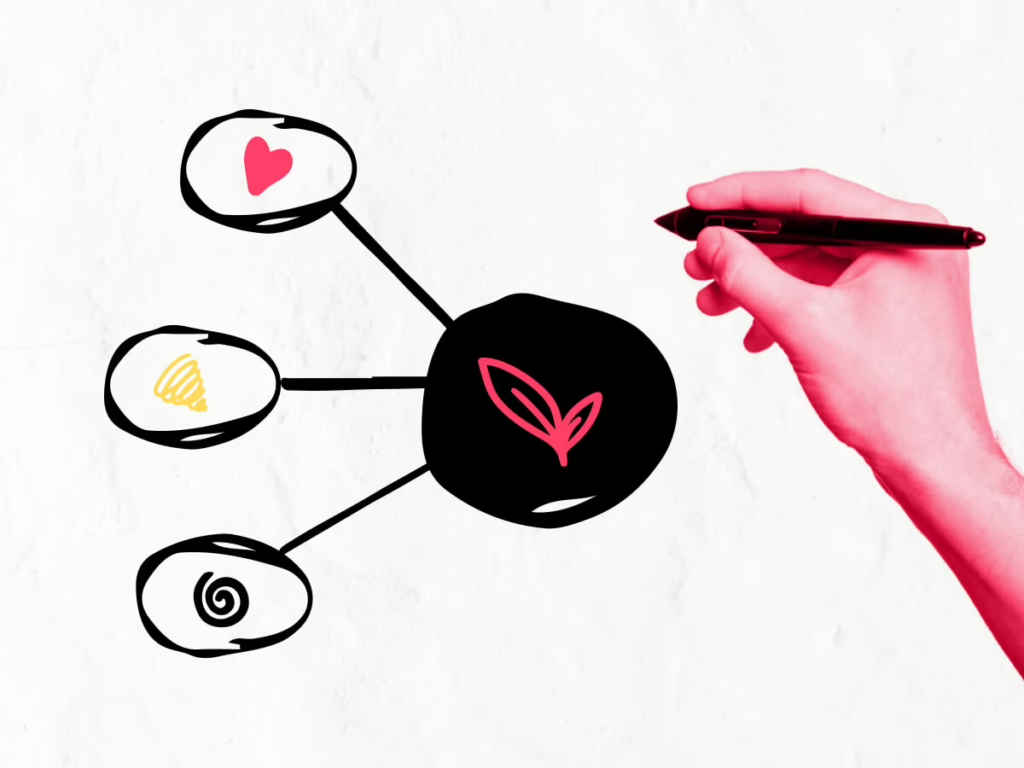Understanding Authenticity in Branding
Hey fellow business owners!
If you’re in the ethical and conscious niche, you might have heard about the current debate on what brand authenticity really is. Can a brand actually be authentic? How can you do marketing in an ethical way?
Consumers nowadays aren’t just buying products, they’re investing in relationships. They’re savvy, they’re values-driven, and they can spot rubbish from a mile away.
If you found yourself nodding while reading these sentence, then this article is for you.
I can picture you: you care deeply about your mission, you want to connect with your community on a genuine level, but sometimes, the “how” feels a bit icky.
For eco-conscious brands like yours especially, authenticity means walking the sustainability talk throughout your entire business model, not just in marketing campaigns, right?
Well, you’re in the right place. In this post, we’ll get into what authenticity really means for conscious businesses, why it’s the cornerstone of lasting consumer relationships, and how you can weave it into the very fabric of your brand.
- Understanding Authenticity in Branding
- The Importance of Authenticity in Consumer Relationships
- Current Trends in Consumer Expectations for Conscious and Authentic Brands
- Strategies for Building Authentic Brand Identity
- The Role of Transparency in Brand Communication
- Leveraging Social Media for Authentic Engagement
- Case Studies: Brands Successfully Connecting with Consumers
- Measuring the Impact of Authenticity on Brand Loyalty
- Challenges Brands Face in Maintaining Authenticity
- Future Outlook: The Evolution of Authenticity in Conscious Marketing
The Importance of Authenticity in Consumer Relationships
Today’s consumers, particularly the eco-conscious segment, have developed a sophisticated radar for detecting marketing that feels performative rather than genuine.
This connection between brand authenticity and consumer loyalty is particularly strong among millennial and Gen Z shoppers, who prioritize values alignment in their purchasing decisions.
Researches shows that 86% of consumers say authenticity is a key factor when deciding which brands to support. For mission-driven brands, this connection is even more critical: when consumers believe in your purpose, they become advocates and they want you to keep the word given.
Current Trends in Consumer Expectations for Conscious and Authentic Brands
The conscious consumer landscape has evolved significantly, with several key expectations:
- Values-driven operations: Consumers expect brands to demonstrate their values throughout their whole supply chain, not just in marketing materials
- Transparent communication: Regular and honest updates about challenges and efforts, not just achievements
- Community engagement: Active participation in relevant conversations and causes
- Personal connection: Communication that acknowledges the human beings behind both the brand and its customer base
This shift means that marketing can no longer exist separately from operations and they must be integrated reflections of the same core values.
Strategies for Building Authentic Brand Identity

Besides the regular best practices, building an authentic brand identity requires intentional effort across multiple dimensions:
- Define your core purpose: Beyond profit, what positive impact does your brand aim to create?
- Identify your genuine voice: How does your brand communicate in ways that feel true to your mission?
- Showcase real people: Highlight team members, their stories, and their commitment to your mission
- Admit imperfections: Share your sustainability journey, including challenges and setbacks
- Solicit and respond to feedback: Forget top-down and create bidirectional communication channels with your community
These elements combined, will create a brand identity that resonates as authentic rather than fake.
The Role of Transparency in Brand Communication
Transparency has become non-negotiable for ethical brands seeking to establish authentic connections. This means:
- Honest product sourcing information: Clear details about materials, manufacturing processes and partnerships
- Pricing transparency: I know this can be tricky, but explaining the true cost factors behind sustainable products it’s a big plus and can motivate higher prices
- Impact reporting: Regular updates on environmental and social impact metrics
- Behind-the-scenes content: Sharing the messy, imperfect process of building a sustainable business
So far brands have been scared of transparency, but those who embraced it transformed potential weaknesses into trust-building opportunities.
Leveraging Social Media for Authentic Engagement
Social media provides powerful channels for authentic brand storytelling, but requires a strong, strategic approach:
- Value-driven content mix: Balance well thought promotional content with valuable educational and community-focused posts
- Consistent voice: Maintain your brand personality across platforms while adapting to each channel’s format
- Responsive engagement: Timely, personalized interactions with community members
- User-generated content: Encouraging the creation and sharing of customer stories that align with your mission
- Selective platform presence: Focus on channels and spaces where your specific community gathers rather than trying to be everywhere
The most effective social strategies prioritize depth of connection over reach metrics alone.
Case Studies: Brands Successfully Connecting with Consumers
Patagonia

Beyond their well-known environmental activism, Patagonia demonstrates authenticity through their Worn Wear program, encouraging repairs over replacements, even when it means fewer sales.
Who Gives A Crap

This toilet paper company demonstrates authenticity by transparently sharing that they donate 50% of profits to build toilets in developing countries. Their playful, straightforward communication style matches their product and mission, while regularly updating customers on impact metrics and openly share supply chain information.
Treedom

This innovative platform allows customers to plant real, trackable trees around the world. What makes their approach authentic is how they connect digital experiences with tangible environmental impact. By providing updates and photos of specific trees that customers have planted, they create transparent accountability that turns one-time purchases into ongoing relationships.
What these brands share is consistency between stated values and business practices, a loyal and engaged community built through transparency, not gimmicky messaging.
Measuring the Impact of Authenticity on Brand Loyalty

Authenticity takes effort indeed, but it can also drive good, measurable business outcomes:
- Higher customer retention: Authentic brands experience a higher customer retention rate
- Increased word-of-mouth marketing: Authentic brands generate more organic referrals because conscious consumers, if happy, are more likely to become ambassadors
- Premium price tolerance: Consumers are willingly pay more for brands they trust deeply, in conscious businesses too if price is justified by social or ecological impact
- Crisis resilience: When mistakes happen, authentic brands tend to recover faster
As you can see authenticity isn’t just ethical, it’s also good business.
Challenges Brands Face in Maintaining Authenticity
Now the hard part. Even with the best intentions, brands can face significant challenges in maintaining authenticity while scaling:
- Scale vs. personalization: Maintaining the same kind of connection can be challenging as your community grows, especially if the brand it’s intertwined with your own image as the founder
- Consistency across touchpoints: Ensuring your website, social presence, customer service, and products all reflect the same values, have the same approach and maintain the same tone of voice
- Stakeholder pressure: Balancing profit expectations with purpose-driven decisions without disappointing your core audience
Make sure to plan all these actions in the long run to achieve sustainable long term success.
Future Outlook: The Evolution of Authenticity in Conscious Marketing
Looking ahead, several trends will shape authentic brand communication:
- Community co-creation: Brands involving customers in product development and impact initiatives
- Third spaces: Brands crating spaces (or tapping into existing ones) where their communities can meet and look forward to be. Where shopping happens in a casual way than the usual spots
- Hyper-local engagement: Connecting through region-specific sustainability initiatives
- Value-based ecosystems: Brands collaborating with like-minded partners to create integrated and unique experiences
Got some ideas while reading? I hope so! Now go and implement authenticity in your strategy if it’s not there yet. The future belongs to brands that view authenticity not as a marketing tactic but as their fundamental operating system!
Ready to build a more authentic brand that genuinely connects with your conscious consumers? I help purpose-driven entrepreneurs develop marketing strategies that amplify their impact while staying true to their values. Book a free 15-minute discovery call to explore how we might work together to grow your conscious brand.





